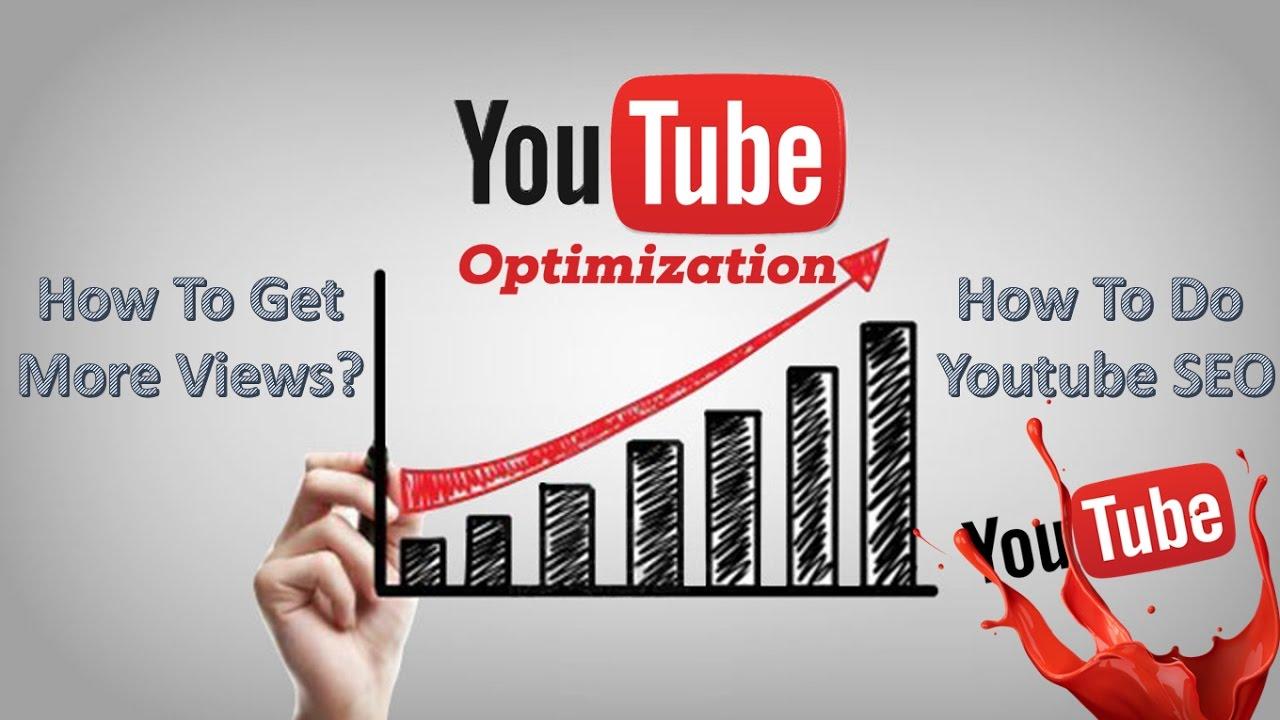
Are you ready to turn your entrepreneurial dreams into reality? If you’ve been eyeing the world of online selling, Shopify is your golden ticket to success. With its user-friendly platform and a plethora of resources at your fingertips, launching your own e-commerce store has never been easier. But here’s the catch: simply setting up a shop isn’t enough. You need to stand out in a crowded marketplace, attract customers, and, most importantly, make money!
In this article, we’re diving into 11 clever ways to boost your income on Shopify, from innovative marketing strategies to tapping into trending niches. Whether you’re a seasoned seller or just starting out, you’ll discover actionable tips that can elevate your business and maximize your profits. So grab a cup of coffee, and let’s unlock the potential of your Shopify store together!
How to Get Started with Shopify and Choose the Right Plan
Starting your journey with Shopify is an exciting venture, especially if you’re looking to make money online. With its user-friendly interface and robust features, Shopify is designed to help you launch your online store quickly and efficiently. But before diving in, it’s crucial to select the right plan that aligns with your business goals and budget.
Shopify offers several pricing tiers, each tailored to different types of entrepreneurs. Here’s a quick rundown of the primary plans:
| Plan | Monthly Cost | Best For |
|---|---|---|
| Basic Shopify | $39 | New entrepreneurs and small businesses |
| Shopify | $105 | Growing businesses and established brands |
| Advanced Shopify | $399 | Large businesses with high sales volume |
When choosing a plan, consider the following factors:
- Your budget: Be realistic about how much you can afford monthly. Starting with the Basic plan makes sense for many new businesses.
- Features: Assess what features you need. For instance, if you require advanced reporting or third-party calculated shipping rates, you might want to start with the Shopify or Advanced plan.
- Growth potential: Think about your business goals. If you plan to scale quickly, opting for a higher-tier plan initially can save you from the hassle of switching later.
Another essential aspect to consider is the transaction fees associated with each plan. Shopify charges different transaction fees based on the plan you choose, and they also offer Shopify Payments to eliminate these fees. If you plan to use a different payment method, ensure you factor in these costs as they can add up.
Once you’ve chosen a plan, the next step is to set up your store. Shopify makes it easy with its intuitive setup wizard that guides you through creating your store, adding products, and customizing your theme. Take advantage of free trials to explore the platform without financial commitment and understand which features you’ll actually use.
Remember, the way you start can significantly impact your success. By choosing the right plan and optimizing your store from the get-go, you’re setting yourself up for a profitable venture in the world of e-commerce.
Finding Your Perfect Niche: Why It Matters More Than You Think
When it comes to succeeding in the competitive world of e-commerce, choosing the right niche can make all the difference. A well-defined niche allows you to stand out in a crowded marketplace and attract a loyal customer base. It’s not just about selling products; it’s about creating a brand that resonates with a specific audience. Here are some compelling reasons why finding your perfect niche is crucial:
- Targeted Marketing: When you have a clear niche, your marketing efforts can be laser-focused. You can tailor your messaging and promotions to speak directly to the needs and desires of your ideal customer, making your campaigns much more effective.
- Reduced Competition: By selecting a niche that isn’t oversaturated, you can carve out your own space in the market. This gives you a better chance of being noticed and appreciated by potential customers.
- Loyal Customer Base: People love to rally around brands that understand their specific needs. By focusing on a niche, you create a community of customers who feel connected to your brand and are more likely to return for repeat purchases.
- Higher Profit Margins: Niche products often come with less price sensitivity because customers are willing to pay a premium for specialized items that meet their unique needs.
But how do you find that niche that not only excites you but also has the potential to be profitable? Start by exploring your own interests and passions. Consider the hobbies or topics that you are most knowledgeable about. Research trends in these areas and analyze the market demand. Tools like Google Trends and social media platforms can provide insights into what people are searching for and discussing.
Another important aspect is understanding your competition. Look at other Shopify stores in your potential niche and analyze their offerings, pricing, and marketing strategies. This can help you identify gaps in the market and opportunities for differentiation. Remember, your unique selling proposition is what will set you apart and draw customers in.
To help you visualize this process, here’s a simple table showcasing some profitable niche ideas along with their potential market demand:
| Niche | Market Demand |
|---|---|
| Eco-Friendly Products | High |
| Pet Accessories | Medium-High |
| Health & Wellness | High |
| Home Office Supplies | Medium-High |
| DIY Craft Kits | Medium |
the importance of finding your niche cannot be overstated. It’s not just a strategy; it’s the foundation of your e-commerce business. By honing in on a specific market, you can create a more engaging brand experience, build lasting customer relationships, and ultimately increase your chances of success on platforms like Shopify. So take the time to explore and define your niche—it’s an investment that could pay off significantly in the long run.

Crafting a Unique Brand Identity that Stands Out
In the competitive world of e-commerce, a unique brand identity can be your secret weapon. It’s not just about selling products; it’s about creating an experience that resonates with your audience. A strong brand helps you stand out in a crowded marketplace, fostering trust and loyalty among your customers.
To craft a memorable brand identity, start with your core values. What does your brand stand for? Identifying these core principles will guide your messaging and create an emotional connection with your audience. Once you have your values, translate them into a compelling brand story that speaks to your target market.
Next, focus on your visual elements. This includes your logo, color palette, and typography. Consistency across all platforms - from your Shopify store to social media – is key. Here’s a quick guide to ensure your visuals resonate:
- Logo: Keep it simple yet distinctive, ensuring it reflects your brand tone.
- Color Palette: Choose colors that evoke emotions related to your brand values.
- Typography: Select fonts that enhance readability while aligning with your brand personality.
Don’t forget the power of customer experience. Every interaction with your brand should reinforce your identity. From the moment a customer lands on your site to the unboxing experience, each touchpoint should consistently reflect your brand’s voice and values. Consider incorporating elements like personalized thank-you notes or unique packaging to elevate the experience.
Engagement with your audience is another crucial aspect. Utilize social media not just for promotion but to build a community around your brand. Share behind-the-scenes content, user-generated posts, and engage in conversations. This not only boosts brand loyalty but also encourages word-of-mouth marketing, which is incredibly valuable for e-commerce businesses.
Lastly, leverage data analytics from your Shopify store to refine your brand identity continually. Understanding your customer behaviors and preferences can help you adjust your strategies and create even more personalized experiences that captivate your audience.
| Element | Purpose | Impact |
|---|---|---|
| Core Values | Guides messaging | Builds trust |
| Visual Branding | Create recognition | Enhances appeal |
| Customer Experience | Encourages loyalty | Increases retention |
| Community Engagement | Fosters connection | Boosts referrals |
The Power of Quality Products: Sourcing and Selection Tips
When venturing into e-commerce, especially on platforms like Shopify, the quality of your products can significantly influence your success. Customers are more discerning than ever, and offering them high-quality items can help build trust, enhance your brand reputation, and encourage repeat purchases. Here are some essential sourcing and selection tips to ensure your offerings resonate with your target audience.
Understand Your Market: Before you start sourcing products, it’s crucial to have a clear understanding of your target market. Conduct thorough research to identify the preferences, needs, and pain points of your audience. Use surveys, social media insights, and competitor analysis to gather valuable information.
Prioritize Quality Over Quantity: While it might be tempting to offer a wide range of products, focusing on quality will pay off in the long run. Customers appreciate durability and reliability, leading to positive reviews and word-of-mouth referrals. Here are some aspects to consider when assessing product quality:
- Material: Ensure that the materials used are of high quality and safe for consumers.
- Craftsmanship: Look for products that are well-made and demonstrate attention to detail.
- Supplier Reputation: Partner with suppliers who have a proven track record of providing quality products.
Leverage Online Resources: Utilize platforms like Alibaba, ThomasNet, or Maker’s Row to find reliable suppliers. These platforms often provide ratings and reviews, which can help you make informed decisions. Additionally, consider reaching out directly to manufacturers for potential partnerships, as they may offer better pricing and customization options.
Test Products Before Launch: Never underestimate the power of product samples. Order samples from potential suppliers to evaluate quality firsthand. This step allows you to assess the product’s look, feel, and functionality, ensuring it meets your standards before adding it to your store.
Keep an Eye on Trends: Staying updated on industry trends can guide your sourcing decisions. Use tools like Google Trends, social media, and trend forecasting websites to identify popular products and emerging niches. Aligning your product selection with current trends can give your store a competitive edge.
Build Relationships with Suppliers: Establishing a good rapport with your suppliers can lead to better pricing, exclusive products, or even early access to new items. Don’t hesitate to communicate openly about your needs and expectations, as well as any feedback from your customers.
Evaluate Product Performance: Once your products are live, continually assess their performance. Monitor sales data, customer feedback, and return rates. This information will guide your future sourcing decisions and help you refine your product offerings, ensuring that you only stock items that resonate with your customers.
By focusing on quality in your product sourcing and selection process, you’ll not only enhance your Shopify store’s reputation but also foster customer loyalty that encourages long-term success.
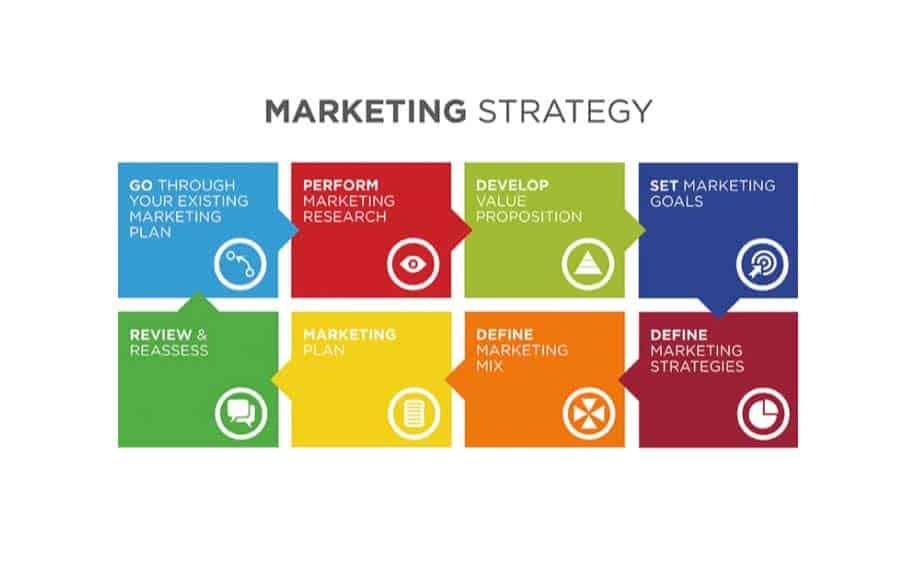
Mastering Effective Marketing Strategies to Drive Traffic
Driving traffic to your Shopify store is essential for maximizing your earning potential. Implementing effective marketing strategies will not only elevate your brand’s visibility but also attract the right audience to your products. Here are some clever approaches to consider:
- Optimize Your Store for SEO: Start with keyword research to identify terms your target audience is searching for. Incorporate these keywords into your product descriptions, titles, and meta tags.
- Leverage Social Media Marketing: Share engaging content on platforms like Instagram, Facebook, and Pinterest. Utilize visually appealing images and videos to showcase your products and connect with your audience.
- Email Marketing Campaigns: Build an email list and send regular newsletters featuring promotions, new arrivals, and valuable content that keeps your customers engaged.
- Influencer Collaborations: Partner with influencers who align with your brand’s values. Their endorsement can introduce your products to a wider audience and enhance credibility.
- Content Marketing: Create a blog on your Shopify site where you share tips, trends, and informative articles relevant to your niche. This not only helps with SEO but also positions you as an industry expert.
Don’t overlook the importance of analytics. Tracking your traffic sources allows you to understand what strategies are most effective, letting you allocate resources smartly. Consider setting up Google Analytics and monitoring key metrics such as:
| Metric | Description |
|---|---|
| Traffic Sources | Identify where your visitors are coming from (e.g., organic search, social media, paid ads). |
| Bounce Rate | Measure the percentage of visitors who leave after viewing only one page. |
| Conversion Rate | Determine the percentage of visitors who make a purchase. |
Paid advertising can also be a powerful tool in your arsenal. Platforms like Facebook and Google Ads allow for targeted campaigns that can drive significant traffic to your store. Consider A/B testing your ads to find the most effective messaging and visuals.
Lastly, don’t forget about the power of user-generated content. Encourage your customers to share their experiences with your products on social media. This not only serves as authentic marketing but also builds a community around your brand, fostering loyalty and repeat business.
By integrating these strategies into your marketing plan, you can effectively drive traffic to your Shopify store and enhance your profitability. Remember, consistency is key—keep experimenting with different methods and stay adaptable to market trends.

Leveraging Social Media to Boost Your Shopify Sales
In today’s digital landscape, social media is not just a platform for social interaction; it’s a powerful tool for driving sales on Shopify. By strategically utilizing social media, you can create a buzz around your products, engage with potential customers, and ultimately boost your revenue. Here’s how you can harness the potential of various social media platforms to enhance your Shopify sales.
First and foremost, visual content is king on social media. Platforms like Instagram and Pinterest thrive on eye-catching images. Make sure to showcase your products with high-quality photos. Consider creating lifestyle shots that show your items in use. This can help potential buyers visualize how the products fit into their own lives, making them more likely to click through to your Shopify store.
Engagement is crucial. Don’t just post and ghost; interact with your audience! Respond to comments, answer questions, and acknowledge feedback. This personal touch builds a community around your brand and can lead to increased loyalty. Additionally, consider hosting live Q&A sessions or product demonstrations on platforms like Facebook or Instagram. This not only shows off your products in real-time but also creates an opportunity for instant interaction.
Influencer marketing can significantly amplify your reach. Collaborate with influencers who resonate with your brand values and have a following that matches your target market. They can create authentic content showcasing your products, reaching a wider audience and driving traffic to your Shopify store. Ensure that the influencers you partner with genuinely align with your brand to maintain authenticity and trust.
Consider running targeted ads on platforms like Facebook and Instagram. With precise targeting options, you can reach users based on their interests, demographics, and shopping behaviors. Allocate a budget for ads that promote your latest products or special offers. Make sure your ad visuals are compelling and include a clear call-to-action that encourages viewers to visit your Shopify store.
Another effective strategy is to create engaging content that educates your audience. This could be in the form of blog posts, videos, or infographics shared across your social channels. Providing value through content not only positions you as an expert in your niche but also drives traffic back to your Shopify store. Here’s a simple table illustrating types of content you can create:
| Content Type | Purpose |
|---|---|
| How-to Guides | Educates potential customers on using your products |
| Customer Testimonials | Builds trust and social proof |
| Behind-the-Scenes Looks | Creates a personal connection with your audience |
| Promotional Offers | Encourages immediate purchases |
don’t underestimate the power of user-generated content. Encourage your customers to share their own photos using your products and tag your brand. This not only provides you with authentic content but also incentivizes others to make a purchase, seeing real people enjoy your offerings. You might even consider running a contest to motivate your audience to share their experiences.
Incorporating these strategies into your social media plan can create a dynamic approach to boosting your Shopify sales. With creativity and consistency, your social media presence can become a significant driver of revenue, helping you achieve your financial goals. So, gear up and start leveraging the full potential of social media today!

Creating Engaging Content that Converts Visitors into Customers
To turn your Shopify visitors into loyal customers, creating engaging content is key. This content should not only captivate but also inform and inspire action. Here’s how you can craft that compelling narrative:
- Understand Your Audience: Get to know your target market. What are their pain points? What solutions do they seek? Conduct surveys or engage on social media to gather insights.
- Utilize Storytelling: People connect with stories. Share customer testimonials, success stories, and your brand’s journey. A good story can build trust and create an emotional bond.
- High-Quality Visuals: Incorporate eye-catching images and videos that complement your content. Visuals should enhance your message, making it more memorable and shareable.
Don’t forget to optimize your content for SEO, as this will increase your visibility and attract more visitors. Use relevant keywords naturally throughout your posts, and make sure to include meta descriptions that entice clicks on search engine results pages.
Consider the following elements to boost engagement:
| Element | Description |
|---|---|
| Call-to-Action (CTA) | Incorporate clear and compelling CTAs that guide visitors on what to do next. |
| Interactive Content | Use polls, quizzes, or surveys to encourage participation and keep visitors engaged. |
| Regular Updates | Keep your blog and product pages fresh with regular updates, showcasing new trends and products. |
Additionally, leveraging user-generated content can significantly enhance trust. Encourage your customers to share their experiences with your products on social media. Feature their posts on your site to create a community feel.
Lastly, analyze your content’s performance through analytics tools. Identify what resonates with your audience and refine your strategy accordingly. A/B testing different headlines, CTAs, and formats can reveal valuable insights that drive conversions.
By carefully crafting content that speaks directly to your audience’s needs and desires, you’ll not only engage visitors but also convert them into satisfied customers eager to return and make a purchase.
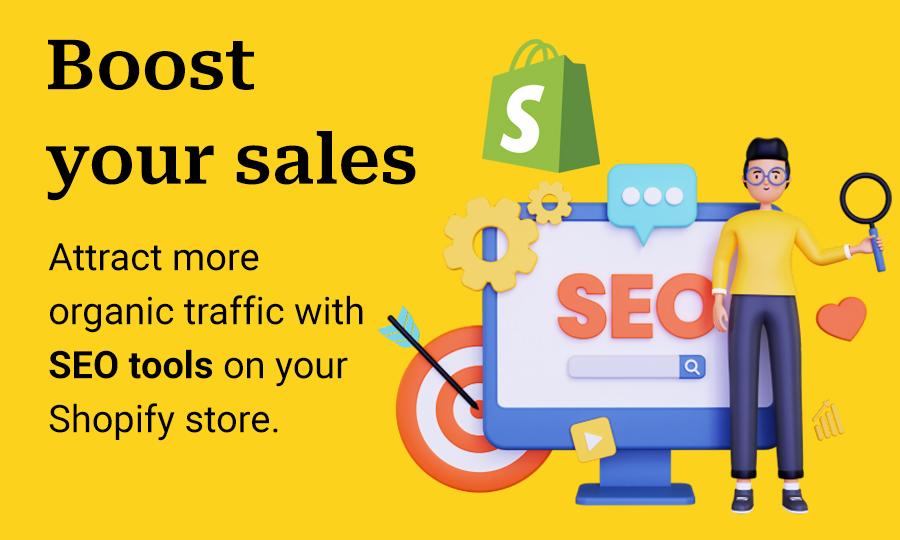
Understanding SEO for Shopify: Tips to Rank Higher and Sell More
To truly make the most of your Shopify store, mastering Search Engine Optimization (SEO) is essential. Implementing effective SEO strategies can help you attract organic traffic, which can translate into higher sales. Here are some critical tips to get you started:
- Keyword Research: Use tools like Google Keyword Planner or Ubersuggest to find keywords relevant to your products. Focus on long-tail keywords that have lower competition but high search intent.
- Optimize Product Pages: Each product page should have a unique title, meta description, and product description that includes your target keywords. This not only helps search engines understand your content but also improves the user experience.
- Use Alt Text for Images: Always add alt text to your images using relevant keywords. This practice not only boosts your SEO but also makes your site more accessible.
- Improve Site Speed: A fast-loading website is crucial for both SEO and user satisfaction. Utilize Shopify’s built-in optimization tools and consider compressing your images to improve loading times.
- Mobile Optimization: Ensure your Shopify store is mobile-friendly. A responsive design improves user experience and is favored by search engines.
Another vital aspect of your SEO strategy is content creation. Regularly updating your store with fresh content can keep both customers and search engines engaged. Consider adding a blog section to share tips, product updates, and industry news. This can not only improve your SEO but also establish your brand as an authority in your niche.
Link building is another effective way to enhance your Shopify SEO. Collaborate with bloggers or influencers within your niche. Guest posts or product reviews can boost your visibility and drive traffic back to your store.
Lastly, don’t overlook the importance of analytics. Use tools like Google Analytics or Shopify’s built-in analytics to track your SEO efforts. Monitor which keywords are driving traffic and adjust your strategies accordingly to maximize your reach and revenue.
| SEO Strategy | Benefits |
|---|---|
| Keyword Research | Identifies high-traffic opportunities |
| Optimizing Product Pages | Improves visibility and sales |
| Content Creation | Engages customers and boosts authority |
| Link Building | Enhances credibility and traffic |
| Analytics | Informs data-driven decisions |
By implementing these strategies, you can significantly improve your Shopify store’s visibility and drive more sales. Stay proactive and continuously refine your SEO approach to adapt to changing trends and consumer behaviors.

Utilizing Email Marketing to Nurture Your Customer Base
Email marketing stands out as an effective tool for building and nurturing your customer base. When executed correctly, it can establish strong relationships and drive repeat purchases, ensuring a steady stream of income for your Shopify store.
Start by segmenting your audience. Not all customers are the same, and tailoring your messages to specific demographics can significantly enhance engagement rates. Consider creating segments based on:
- Purchase History: Target customers who have bought related products.
- Engagement Level: Differentiate between active and inactive subscribers.
- Location: Customize offers based on geographical preferences.
Once you’ve segmented your list, craft personalized email campaigns that resonate with each group. Use dynamic content to display relevant products or offers based on the recipient’s past interactions. This level of personalization not only boosts click-through rates but also increases the likelihood of conversion.
Automated email sequences can also play a crucial role in nurturing relationships. Set up automated campaigns for various customer journeys, such as:
- Welcome Series: Introduce new subscribers to your brand and highlight popular products.
- Abandoned Cart Reminders: Encourage customers to complete their purchase by sending gentle reminders.
- Post-Purchase Follow-Ups: Request feedback, offer care tips, or suggest complementary products.
| Email Type | Purpose |
|---|---|
| Welcome Series | Introduce brand, highlight products |
| Abandoned Cart | Encourage completion of purchase |
| Feedback Request | Gather insights and improve services |
Don’t forget to include engaging visuals and compelling calls-to-action in your emails. A well-placed button can lead customers directly to your product pages, simplifying the buying process. Moreover, employ A/B testing to refine your subject lines, content, and design elements, ensuring the highest impact.
Lastly, consistently analyze your email marketing performance. Keep an eye on key metrics such as open rates, click-through rates, and conversion rates. This data will enable you to understand what resonates with your audience and help you tweak your strategies for better results.
By leveraging email marketing to nurture your customer base, you not only foster loyalty but also create a community around your brand. Happy customers are more likely to refer others, thus amplifying your reach and sales in the competitive Shopify landscape.
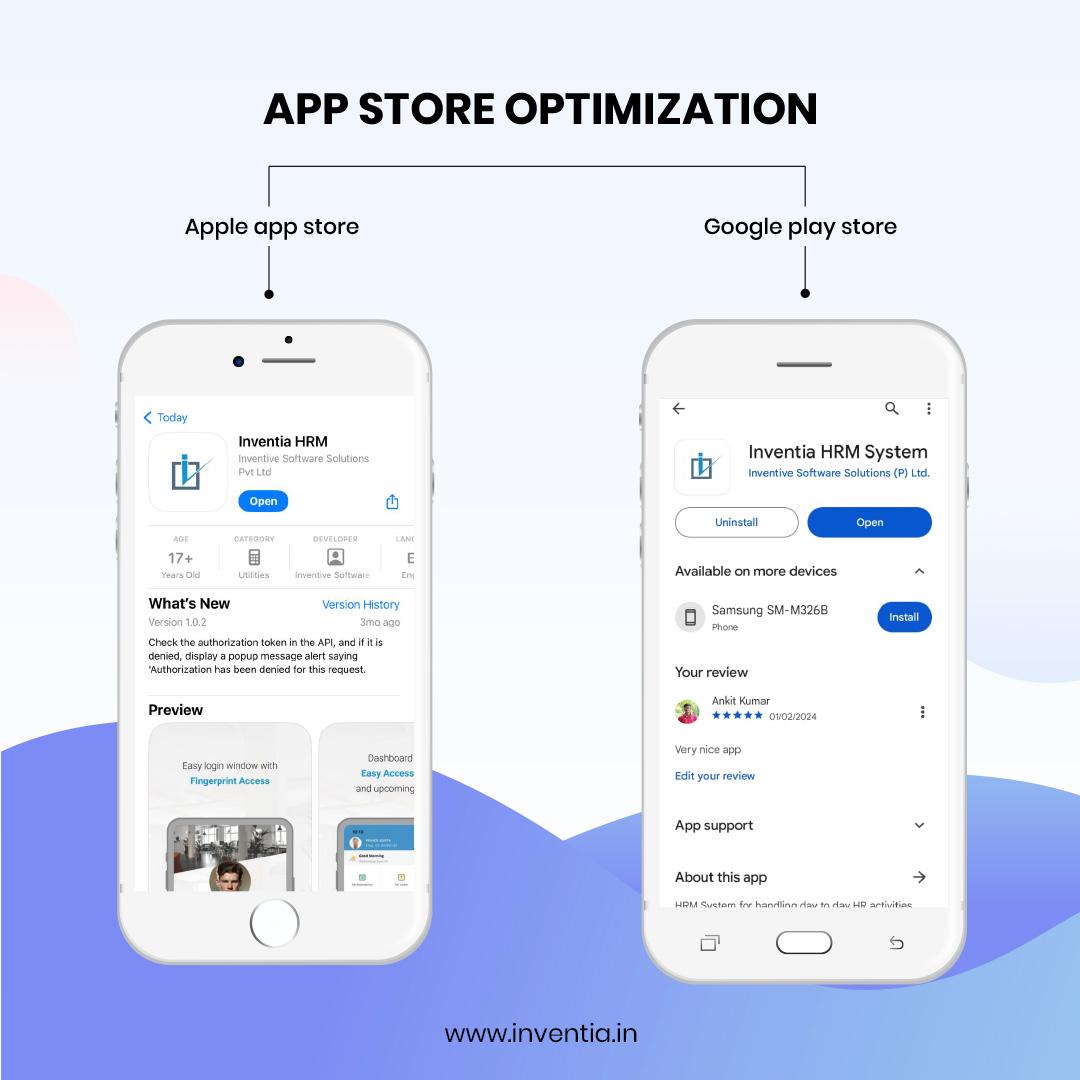
How to Optimize Your Store for a Seamless User Experience
Creating a seamless user experience is crucial for driving conversions and keeping customers coming back to your Shopify store. Here are some effective strategies to enhance your store’s usability:
- Responsive Design: Ensure your store is mobile-friendly. A significant percentage of shopping is done on mobile devices, so your site should look and function perfectly on any screen size.
- Intuitive Navigation: Organize your product categories clearly. Use descriptive labels and keep the navigation simple to help users find what they’re looking for effortlessly.
- High-Quality Images: Use clear, high-resolution images for your products. Allow users to zoom in and view products from multiple angles to create a more immersive shopping experience.
- Fast Load Times: Optimize images and minimize scripts to ensure your store loads quickly. Users often abandon sites that take too long to load.
- Clear Call-to-Action (CTA): Use bold and prominent CTAs that guide users towards making a purchase. Phrases like “Shop Now” or “Get Yours Today” should stand out on the page.
Another crucial aspect of user experience is the checkout process. A streamlined, efficient checkout can significantly reduce cart abandonment rates:
- Guest Checkout: Allow customers to check out without creating an account. This minimizes friction and helps convert first-time visitors into buyers.
- Multiple Payment Options: Offer a variety of payment methods, such as credit cards, PayPal, and digital wallets, to cater to different customer preferences.
- Progress Indicators: Display a progress bar during checkout to inform users of the steps they have completed. This transparency encourages them to continue through the process.
Don’t overlook the power of customer feedback:
- Product Reviews: Incorporate customer reviews on your product pages. They build trust and can sway purchasing decisions.
- Live Chat Support: Implement a live chat feature to assist customers in real-time. This instant support can answer inquiries and reduce hesitations during the purchasing process.
Lastly, make sure to regularly analyze user behavior on your site. Utilize tools like Google Analytics to track metrics such as bounce rates, exit pages, and conversion rates. A/B testing different layouts or features can also provide insights into what works best for your audience:
| Feature | Benefit |
|---|---|
| Responsive Design | Improves mobile user experience |
| Intuitive Navigation | Helps users find products quickly |
| Fast Load Times | Reduces bounce rates |
| Guest Checkout | Encourages first-time purchases |
By implementing these strategies, you’ll create a smoother shopping journey for your customers, ultimately leading to increased sales and customer loyalty. A user-friendly store not only attracts visitors but also keeps them coming back for more!

Exploring Passive Income Opportunities with Shopify
Diving into the world of Shopify offers a plethora of opportunities for those looking to create a passive income stream. With the right strategies and a solid plan, you can turn your online store into a revenue-generating machine. Here’s how you can leverage Shopify to make money while you sleep.
One of the most effective ways to earn passive income is through print-on-demand services. With this model, you can sell custom designs on apparel, mugs, or home decor without maintaining inventory. Partnering with platforms like Printful or Teespring allows you to focus on marketing while they handle production and shipping. Here’s what you gain:
- No upfront costs for inventory
- Customizable products that reflect current trends
- Hands-off fulfillment, allowing you to scale effortlessly
Another avenue worth exploring is dropshipping. This model allows you to sell products without holding any stock. You simply list products from suppliers on your Shopify store and purchase them only after sales are made. It’s a low-risk way to test different niches and find your market fit. Here are some benefits:
- Minimal financial risk
- Access to a vast range of products
- Flexibility to pivot quickly based on market trends
If you’re passionate about crafting or creating homemade goods, digital products can be a fantastic source of income. Whether it’s eBooks, online courses, or downloadable art and templates, digital products require no physical inventory. Once created, they can be sold repeatedly without any additional effort. Consider these advantages:
- High profit margins since there are no shipping costs
- Instant delivery to customers
- The potential for evergreen sales over time
For those looking to diversify income streams, consider affiliate marketing through your Shopify store. By promoting products from other companies and earning a commission on sales, you can generate income without the hassles of inventory or fulfillment. Building a blog or content around your niche can enhance your affiliate marketing efforts, establishing trust and driving traffic to your store.
Here’s a quick comparison of different passive income strategies on Shopify:
| Strategy | Initial Investment | Scalability | Effort Required |
|---|---|---|---|
| Print-on-Demand | Low | High | Low |
| Dropshipping | Low | Medium | Medium |
| Digital Products | Low | High | Low |
| Affiliate Marketing | Free | Medium | Medium |
the potential for passive income on Shopify is vast. By choosing the right model that aligns with your interests and strengths, you can build a sustainable online business that generates income with minimal ongoing effort. Start your journey today and unlock the financial freedom that Shopify offers!
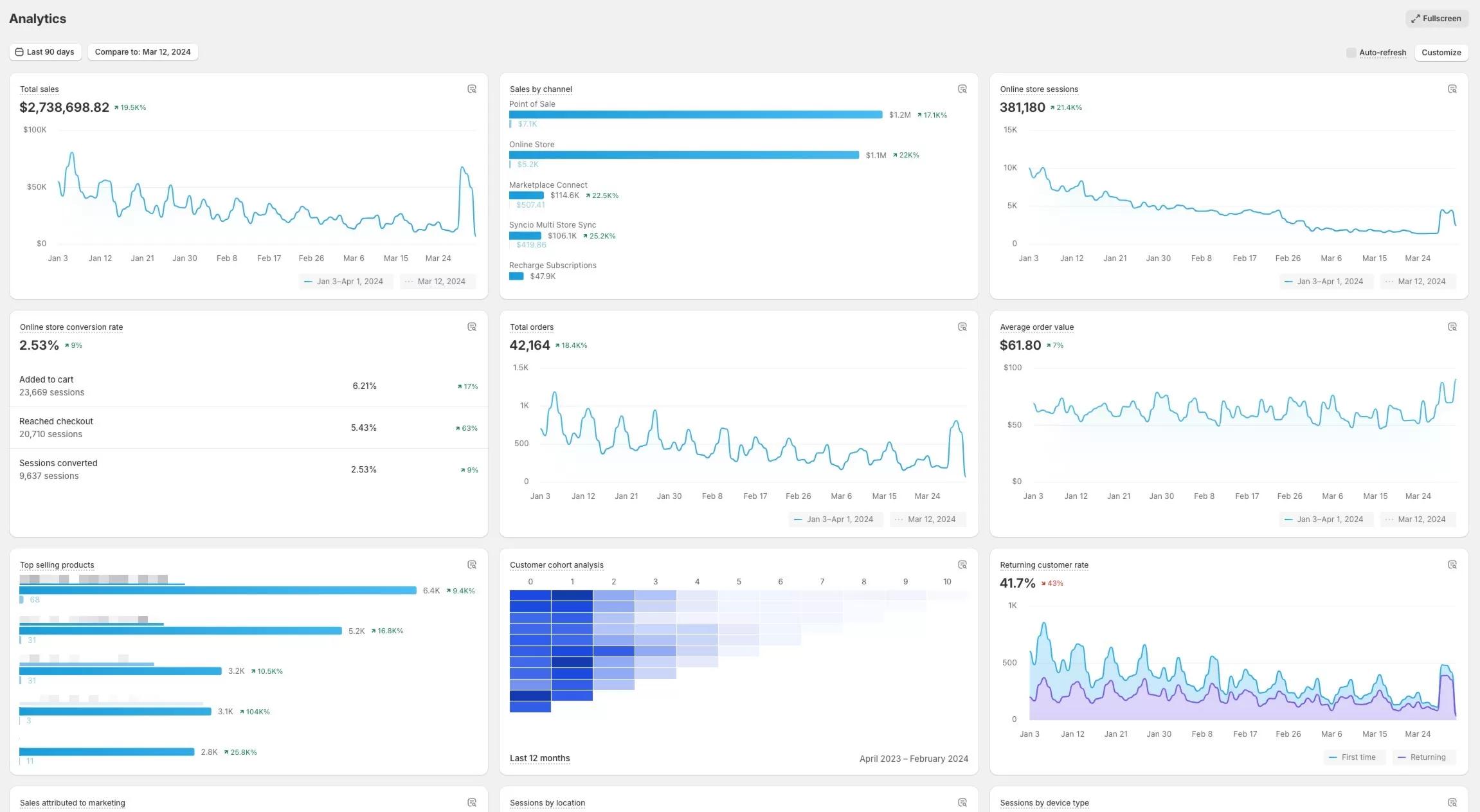
Analyzing Your Shopify Analytics for Continuous Improvement
Understanding your Shopify analytics is crucial for driving continuous improvement in your online store. By digging into these insights, you can identify what’s working and what isn’t, allowing you to make informed decisions that enhance your profitability.
Start by looking at your traffic sources. Knowing where your visitors are coming from helps you allocate resources more effectively. For instance, if you find that social media channels drive a significant portion of your traffic, it may be worth investing more in your social media marketing strategy. Consider the following sources:
- Organic Search: Are your SEO efforts paying off?
- Direct Traffic: Are customers coming directly to your site?
- Referral Traffic: Are partnerships or guest posts bringing in visitors?
- Social Media: Which platforms are most effective?
Next, analyze your conversion rates. A high number of visitors but low conversion rates can indicate problems with your website’s design, product offerings, or pricing strategy. Use A/B testing to experiment with different elements, such as:
- Product descriptions
- Pricing models
- Call-to-action buttons
- Promotional offers
Don’t forget to evaluate your customer behavior. Tools like heatmaps or session recordings can provide valuable insights into how users interact with your site. Look for patterns in:
- Which pages keep users engaged?
- Where do customers typically drop off?
- What products are frequently added to carts but not purchased?
To make data-driven decisions, consider creating a table to summarize key metrics over time. This can help you visualize trends and make comparisons easier:
| Metric | Month 1 | Month 2 | Month 3 |
|---|---|---|---|
| Traffic Sources | 2000 | 2500 | 3000 |
| Conversion Rate | 2.5% | 3.0% | 4.0% |
| Average Order Value | $50 | $55 | $60 |
Lastly, don’t just collect data—act on it! Set specific goals based on your findings and track your progress. If you notice a drop in traffic after a marketing campaign, re-evaluate your strategy. By continuously analyzing and adapting, you set your Shopify store up for long-term success.

Inspiring Success Stories: Learning from Top Shopify Entrepreneurs
Success in the world of e-commerce often feels like an elusive dream, but the stories of top Shopify entrepreneurs illuminate the path forward. These individuals have transformed their passions into profitable ventures, mastering the art of online retail through creativity and resilience. Along the way, they’ve implemented innovative strategies that anyone can adopt to enhance their Shopify journey.
Take, for instance, the story of Jessica, who started selling handmade accessories on Shopify. With a keen eye for design and an understanding of her target audience, she leveraged social media to build a loyal following. By sharing engaging content and behind-the-scenes looks at her creative process, she not only attracted customers but also fostered a community around her brand. This approach highlights the importance of connecting with your audience on a personal level, turning one-time buyers into lifelong fans.
Then we have Mark, a tech enthusiast who saw a gap in the market for eco-friendly gadgets. His success came from thorough market research and a commitment to sustainable practices. By collaborating with eco-conscious influencers and participating in local green initiatives, he managed to position his brand as a leader in the niche. This story underscores the significance of aligning your business with values that resonate with your target audience.
Another inspiring example is Linda, who turned her love for fitness into a thriving Shopify store. By creating informative content around fitness and wellness, she established herself as an authority in her niche. Linda utilized email marketing effectively, offering exclusive tips and discounts to her subscribers, which significantly increased her conversion rates. Her journey illustrates the power of content marketing in driving sales and building brand trust.
| Entrepreneur | Key Strategy | Lesson Learned |
|---|---|---|
| Jessica | Social media engagement | Build a community around your brand. |
| Mark | Market research and sustainability | Align your business with your audience’s values. |
| Linda | Content marketing | Establish authority through informative content. |
What sets these successful Shopify entrepreneurs apart is their willingness to adapt and experiment. They understand that the e-commerce landscape is ever-changing, and they consistently seek to improve their strategies. For instance, many of them utilize A/B testing to refine their marketing messages, ensuring maximum effectiveness. This iterative approach allows you to stay ahead of trends and better meet customer needs.
Moreover, these entrepreneurs are not afraid to pivot when necessary. Whether it’s shifting their product line or embracing new technologies, being flexible has proven essential in navigating the ups and downs of the e-commerce world. This adaptability can inspire anyone looking to make their mark on Shopify—stay aware of market changes and be ready to adjust your strategy accordingly.
the stories of these top Shopify entrepreneurs provide invaluable insights into what it takes to succeed. By learning from their experiences and applying their strategies, you can carve out your own path in the e-commerce realm. Embrace creativity, remain connected with your audience, and don’t hesitate to innovate—these elements are key to transforming your Shopify store into a lucrative business.
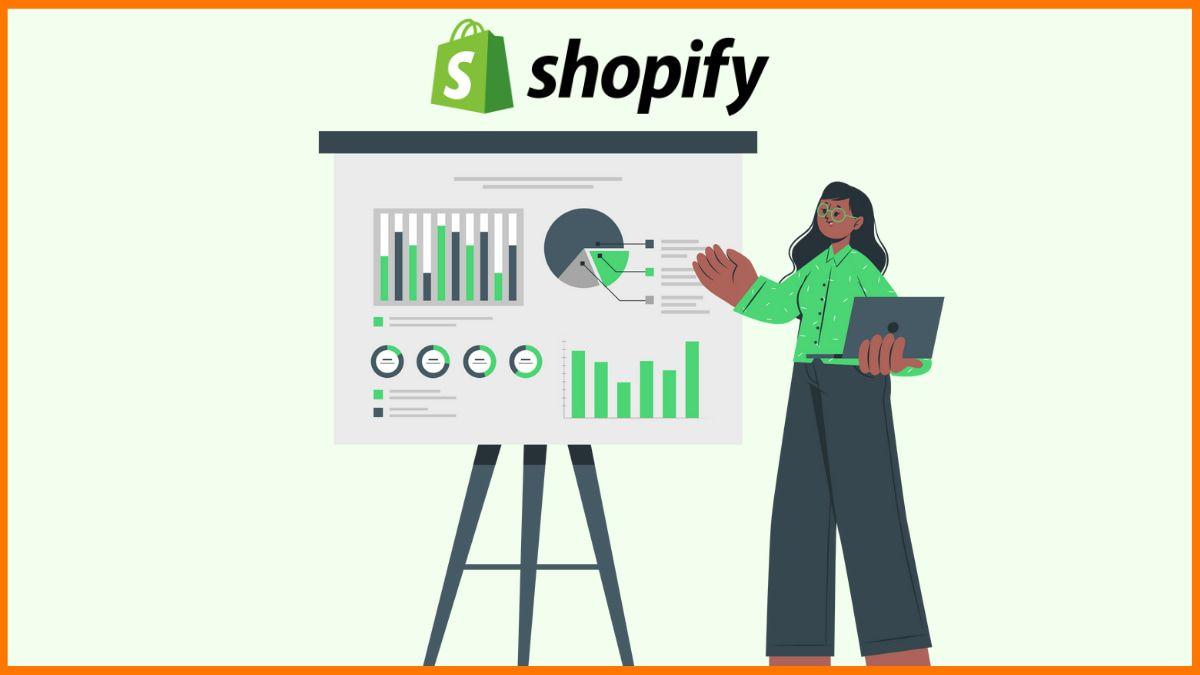
Final Thoughts on Building a Profitable Shopify Business
Success in the world of e-commerce, particularly with Shopify, doesn’t come from sheer luck; it comes from a strategic approach and a willingness to adapt. Building a profitable Shopify business involves understanding your audience, continuously refining your offerings, and mastering the art of marketing. Here are some key takeaways to keep in mind:
- Know Your Audience: The foundation of your business lies in understanding who your customers are. Conduct market research to discover their preferences, pain points, and shopping behaviors.
- Choose the Right Niche: Select a niche that not only interests you but also has a demand in the market. Look for gaps where you can offer unique products that stand out from the competition.
- Optimize Your Store: A well-optimized Shopify store enhances user experience. Invest time in layout, product descriptions, images, and SEO to ensure customers enjoy their shopping journey.
- Leverage Social Media: Social media platforms are powerful tools for driving traffic. Share engaging content, run targeted ads, and connect with your audience to build brand loyalty.
- Utilize Data Analytics: Regularly review analytics to track performance. Understanding your sales data, customer behavior, and conversion rates will help you make informed decisions.
When it comes to revenue streams, consider diversifying your offerings. Integrating apps that enhance functionality or offer complementary products can significantly increase your average order value. Additionally, hosting promotions or seasonal sales can create urgency, encouraging customers to make a purchase.
Building a community around your brand can also lead to sustained growth. Engage with your customers through newsletters, social media groups, or forums. This not only fosters loyalty but also provides valuable feedback that can help you improve your products and services.
never underestimate the power of customer service. Providing exceptional support can turn a one-time buyer into a repeat customer. Consider implementing chatbots for instant responses, or personalizing follow-up emails to enhance the customer experience.
| Strategy | Description |
|---|---|
| Market Research | Understand customer needs and preferences. |
| Niche Selection | Focus on a specific market with growth potential. |
| Store Optimization | Enhance user experience and SEO for better visibility. |
| Social Media Engagement | Build a community and drive traffic through social networks. |
| Data-Driven Decisions | Use analytics to inform business strategies. |
building a profitable Shopify business is a journey that requires persistence, creativity, and strategic planning. By focusing on your audience, optimizing your offerings, and providing exceptional service, you can create a thriving online store that not only generates revenue but also fosters lasting customer relationships.
Frequently Asked Questions (FAQ)
Sure! Here’s a conversational and persuasive Q&A format for your article on “How to Make Money on Shopify: 11 Clever Ways (+ Best Niches)”:
Q: What is Shopify and why should I consider it for making money?
A: Shopify is an all-in-one e-commerce platform that allows you to set up your own online store and sell products with ease. It’s perfect for anyone looking to make money online because it’s user-friendly, offers customizable templates, and has powerful tools to help you manage your business. Whether you’re a seasoned entrepreneur or just starting out, Shopify can help you turn your passion into profit!
Q: What are some clever ways to make money on Shopify?
A: Great question! Here are 11 clever ways you can leverage Shopify to boost your income:
- Dropshipping: Start without inventory by partnering with suppliers who ship products directly to your customers.
- Print on Demand: Create custom designs on products like t-shirts, mugs, and more, only printing them when someone makes a purchase.
- Affiliate Marketing: Promote products from other brands and earn a commission for every sale made through your unique link.
- Digital Products: Sell e-books, courses, or software—products that can be delivered instantly without shipping costs!
- Subscription Services: Offer a subscription box for niche products; recurring revenue is always a plus.
- Niche Stores: Focus on a specific market, like eco-friendly or pet supplies, to attract dedicated customers.
- Flipping Products: Buy discounted or vintage items, refurbish them, and resell them for a profit.
- Brand Collaborations: Partner with influencers to expand your reach and tap into their audience.
- Wholesale Selling: Buy products in bulk and sell them at retail prices on your Shopify store.
- Custom Packaging and Branding: Stand out with unique packaging that enhances customer experience and encourages repeat sales.
- Online Courses or Workshops: Share your expertise and monetize your knowledge through online education.
Q: What are the best niches to consider when starting a Shopify store?
A: Choosing the right niche is crucial for success! Here are some of the best niches that are currently trending:
- Health and Wellness: Think supplements, fitness gear, and wellness programs.
- Sustainable and Eco-friendly Products: Items that promote sustainability are gaining popularity and loyalty.
- Pet Products: Pet owners love to pamper their furry friends, making this a lucrative niche.
- Home Office Supplies: With more people working from home, products that enhance productivity are in high demand.
- Beauty and Skincare: Natural and organic beauty products are always a hit.
- Hobby and Craft Supplies: As people indulge in new hobbies, there’s a growing market for craft supplies.
Q: How can I ensure my Shopify store stands out from the competition?
A: To stand out, focus on providing exceptional customer service, unique branding, and high-quality products. Also, leverage social media to build a community around your brand. Engage with your audience, showcase user-generated content, and consider running promotions or contests to keep interest high.
Q: Is it really possible to make a full-time income with Shopify?
A: Absolutely! Many entrepreneurs have turned their Shopify stores into full-time businesses. With dedication, strategic marketing, and a solid understanding of your target audience, you can definitely create a sustainable income stream. Remember, it takes time, but the potential for growth is immense.
Q: How do I get started with Shopify?
A: Getting started is simple! Sign up for a Shopify account, choose a plan that fits your budget, and start customizing your store. You can upload products, set up payment options, and design your website to reflect your brand. And don’t forget to take advantage of the wealth of resources and tutorials available to help you along the way!
In Conclusion:
Shopify offers an incredible platform for those looking to make money online. By exploring the clever strategies and niches we discussed, you can carve out your own path to success. So why wait? Start building your dream store today and watch your entrepreneurial journey unfold!
—
Feel free to adjust any parts to better fit your article’s style and focus!
In Retrospect
As we wrap up this guide on making money with Shopify, it’s clear that opportunities abound for those ready to dive in. Whether you’re just starting your e-commerce journey or looking to elevate your existing store, the strategies we’ve discussed can help set you on the path to success.
Remember, the key to thriving in the Shopify world lies not just in choosing the right products but in understanding your audience and continually adapting to their needs. Explore the best niches, implement innovative marketing techniques, and never hesitate to experiment—this is your business, and you have the power to shape it however you like.
So, why wait? Start taking action today! The world of e-commerce is ripe for the taking, and with Shopify at your fingertips, you have all the tools you need to turn your entrepreneurial dreams into reality. Dive into the marketplace, learn from your experiences, and watch your efforts pay off. Happy selling!




